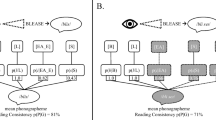Abstract
The last decade has placed the superiority of graphical user interfaces over traditional text-based approaches beyond dispute. In almost all contexts, users have found graphical interfaces easier to learn, faster to use, and less error-prone. However, it has been shown that the creation of powerful graphical interfaces takes up to 80% of the time required to develop an application. In our work, we seek to extend the benefits of graphical interaction to the next layer of computer user—the interface designer. Our work in this area is distinguished from other efforts by two important differences. First, while other efforts focus primarily on the design of “standard” user interfaces, our approach emphasizes the creation of unique and innovative interfaces by supporting, among other things, arbitrary user-designed graphical representations, direct specification of animation, and digitized sound. Second, our goal is to cater to the nonprogrammer. Thus, we address a challenging trade-off: maximizing power and flexibility in an extremely simple environment. We explore the utility of the prototype object-oriented paradigm, a high-level userinterface language, and a direct-manipulation programming environment in this context.
Similar content being viewed by others
References
Apple (1987) Hypercard user's guide. Apple Computer
Barth PS (1986) An object-oriented approach to graphical interfaces. ACM Trans Graph 5(2):142–172
Borning A (1979) ThinkLab — a constraint-oriented simulation laboratory. Unpublished doctoral dissertation. Stanford University
Borning A (1986) Classes versus prototypes in object-oriented languages. Proc. ACM/IEEE Fall Joint Computer Conference, Dallas
Cardelli L (1987) Building user interfaces by direct manipulation. DEC Systems Research Center Technical Report No. 22.
Douglas SA, Novick DG, Tomlin RS (1987) Consistency and variation in spatial reference. Proc Ninth International Conference on Cognitive Science, Scattle
Douglas SA, Doerry E, Novick DG (1990) QUICK: a user interface design kit for non-programmers. Proc. SIGGRAPH Symposium on User Interface Software and Technology, Snowbird
Douglas SA, Doerry E, Novick D (1991) QUICK: exploring the middle ground in user interface design tools. Proc 24th Hawaii International Conference on Systems Science, Kailua-Kona
Fischer G, Lemke AC (1988) Construction kits and design environments: steps toward human problem-domain communication. Hum-Comput Interact 3(3):179–222
Fischer G, Lemke AC (1989) Knowledge-based design environments for user interface design. Submitted to the 11th International Conference on Software Engineering
Gould L, Finzer W (1984) Programming by rehearsal. Technical Report No. SCL-84-1, Xerox PARC, Palo Alto
Henderson DA (1986) The trillium user interface design environment. Proc. Human Factors in Computing, CHI'86, Boston, pp 221–227
Lange B, Moher T (1986) Some strategies for reuse in a objectoriented programming environment. Proc Human Factors in Computing, CHI'89, Boston, pp 221–227
Miyake N (1986) Constructive interaction and the interative process of understanding. Cognitive Sci 10:151–177
Myers B (1986) Visual programming, programming by example, and program visualization: a taxonomy. Proc Human Factors in Computing systems Conference CHI'86, Boston
Myers B (1990) Creating user interfaces using programming by example, visual programming and constraints. ACM Trans Prog Lang Syst 12(2):143–177
Newell A, Simon H (1972) Human problem solving. Prentice-Hall, Englewood Cliffs
Schmucker K (1986) MacApp: an application framework. BYTE 11 (8)
Serius89 (1989) Serius89 Documentation Release 1.1. Serius Corporation
Shaw M (1986) An input-output model for interactive systems. Proc Hum Fact Comput. CHI'86, Boston, pp 261–273
Shneiderman B (1983) Direct manipulation: a step beyond programming languages. IEEE Comput 16 (8):57–69
Smethers Barnes (1989) Prototyper user's manual. Smethers Barnes Publishing Division, Portland
Smith RG (1984) On the development of commercial expert systems. AI Magazine 5(3):61–73
Stasko JT (1990) The path-transition paradigm: a practical methodology for adding animation to program interfaces. J Visual Lang Comput 1(3):213–236
Stasko JT (1991) Using direct manipulation to build algorithm animations by demonstration. Proc Human Factors in Computing. CHI'91, New Orleans, pp 307–314
Ungar D, Smith RB (1987) SELF: the power of simplicity. Proc Object-Oriented Programming Systems, Languages and Applications Conference, Orlando
Author information
Authors and Affiliations
Corresponding author
Rights and permissions
About this article
Cite this article
Douglas, S., Doerry, E. & Novick, D. QUICK: a tool for graphical user-interface construction by non-programmers. The Visual Computer 8, 117–133 (1992). https://doi.org/10.1007/BF01900552
Issue Date:
DOI: https://doi.org/10.1007/BF01900552




